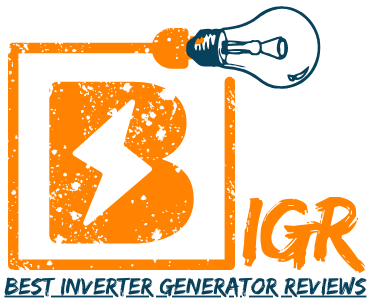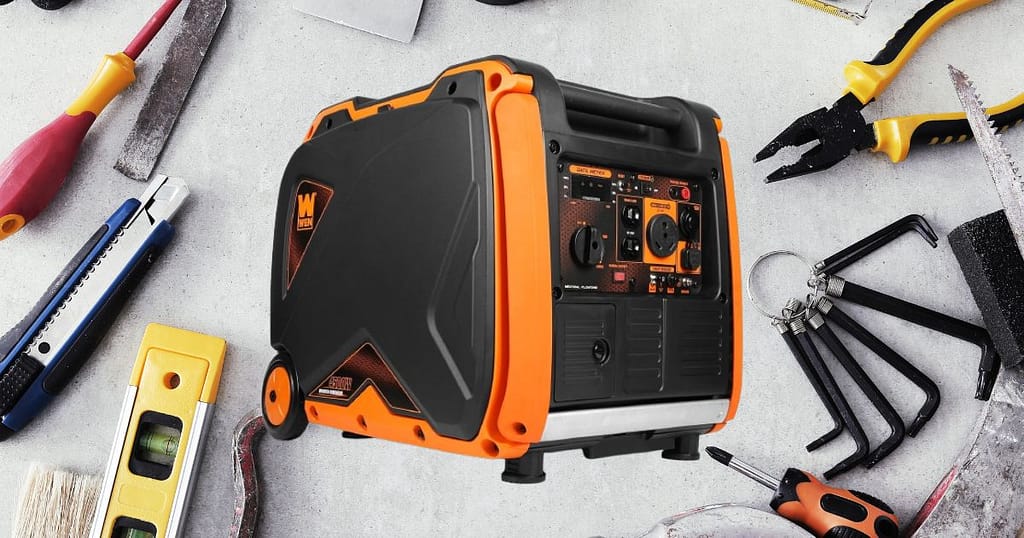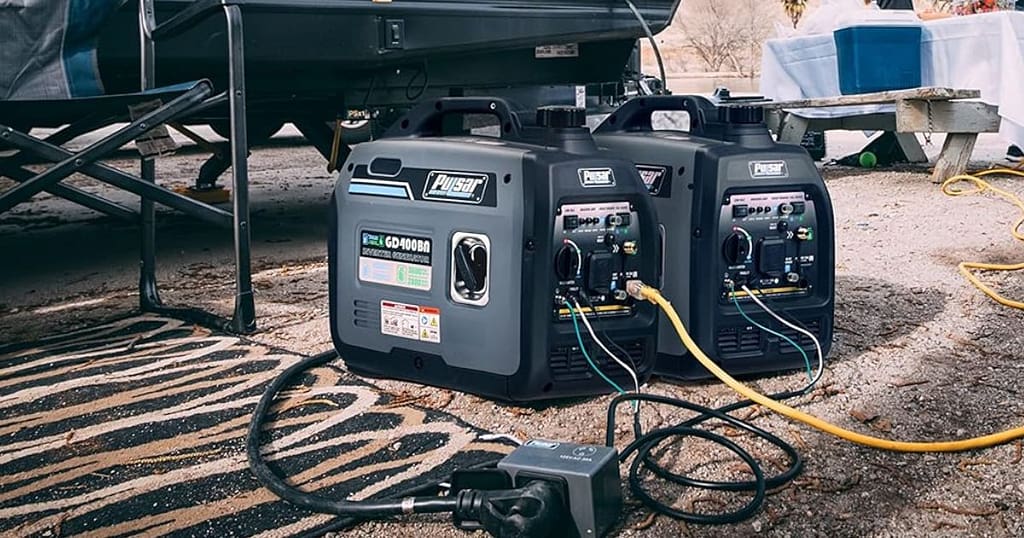A portable generator is an essential piece of equipment for camping trips, outdoor events, and emergency power outages. It provides power to run essential appliances and tools, but choosing the right wattage and voltage can be a daunting task. In this blog post, we will discuss how to calculate the wattage and voltage you need for your portable generator.
How to Calculate Wattage and Voltage for Your Generator
Step 1: Determine Your Power Needs
The first step in calculating the wattage and voltage you need for your portable generator is to determine your power needs. Start by making a list of all the appliances and tools you plan to use with the generator. For each item on the list, determine its power consumption in watts.
You can find the wattage of most appliances and tools on their nameplates or in the owner’s manual. If the wattage is not listed, you can calculate it by multiplying the voltage by the amperage. For example, a 120-volt appliance that draws 5 amps would consume 600 watts (120 volts x 5 amps = 600 watts).
Step 2: Add Up Your Power Needs
Once you have determined the wattage of each appliance and tool, add up the total wattage to determine the overall power needs for your portable generator. It’s important to remember that some appliances and tools have a surge or starting wattage that is higher than their running wattage. You’ll need to factor in these surges when calculating your power needs.
Step 3: Choose the Right Voltage
Portable generators are available in different voltage ratings, such as 120 volts, 240 volts, or both. The voltage rating you need will depend on the appliances and tools you plan to use with the generator. Most household appliances and tools operate on 120 volts, while larger appliances, such as air conditioners, may require 240 volts.
If you plan to use both 120-volt and 240-volt appliances and tools, you’ll need a generator with both voltage ratings. However, keep in mind that a generator with both voltage ratings will be more expensive than a generator with only one voltage rating.
Step 4: Choose the Right Wattage
The wattage rating of a portable generator indicates the maximum power output it can provide. Choosing a generator with enough wattage to meet your power needs is important, but not too much wattage, as this will be wasteful and more expensive.
To determine the right wattage for your portable generator, add up the total wattage of all the appliances and tools you plan to use and then add 20% to account for surge wattage. For example, if the total wattage of your appliances and tools is 4,000 watts, you’ll need a generator with a rated wattage of at least 4,800 watts (4,000 watts + 20% surge = 4,800 watts).
Step 5: Consider Other Factors
In addition to wattage and voltage, there are other factors to consider when choosing a portable generator, such as fuel type, noise level, and portability. Gasoline-powered generators are the most common and affordable but require regular maintenance and emit exhaust fumes. Propane-powered generators are cleaner and quieter, but they are more expensive and require a separate propane tank.
Noise level is another important factor to consider, especially if you plan to use the generator in a residential area or campground. Look for generators with a noise level of 60 decibels or lower.
Finally, consider the portability of the generator. If you plan to move the generator frequently, look for a lightweight, compact model with wheels and handles for easy transport.
How to Choose the Right Voltage in 120V vs 240V?
A portable generator is a great investment for anyone who needs a reliable source of backup power in the event of an outage. One of the most important considerations when choosing a generator is the voltage it provides. Generators come in two different voltage options: 120V and 240V. Each has its own benefits and drawbacks, and choosing the right voltage for your needs is essential. Here, we will explore the differences between the two voltages and help you choose the right one for your portable generator.
What is Voltage?
Voltages are measured in volts or with (V) sable, it is the electrical potential difference between two points in a circuit. In the case of a portable generator, voltage refers to the amount of electrical energy that is available to power your appliances and devices.
120V Generators
A 120V generator provides a single phase of power, which means it has one hot wire and one neutral wire. This voltage is suitable for powering most home appliances, including lights, fans, televisions, and small kitchen appliances. It’s also ideal for powering power tools and small construction equipment. One of the main advantages of a 120V generator is that it’s lighter and more compact than a 240V generator, making it easier to transport and store.
However, one of the disadvantages of a 120V generator is that it has a limited power output. Most 120V generators have a maximum output of 3,500 to 5,500 watts, which means they can’t power large appliances or high-demand equipment, such as central air conditioning units or well pumps.
240V Generators
A 240V generator provides two phases of power, which means it has two hot wires and one neutral wire. This voltage is suitable for powering larger appliances and high-demand equipment, such as central air conditioning units, well pumps, and electric ranges. One of the main advantages of a 240V generator is that it has a higher power output than a 120V generator. Most 240V generators have a maximum output of 7,000 to 12,000 watts, which means they can power more appliances and equipment.
However, one of the disadvantages of a 240V generator is that it’s larger and heavier than a 120V generator, making it more difficult to transport and store. It’s also more expensive than a 120V generator.
Which Voltage Should You Choose?
Choosing the right voltage for your portable generator depends on your specific needs. If you only need to power small appliances and power tools, a 120V generator may be sufficient. However, if you need to power larger appliances or high-demand equipment, a 240V generator is necessary.
If you’re not sure which voltage to choose, it’s important to consider the appliances and equipment you need to power. Make a list of all the appliances and equipment you need to run during a power outage, and determine the total wattage required. You can find the wattage requirements for most appliances and equipment on their labels or in their manuals.
Once you have determined the total wattage required, choose a generator with a wattage output that exceeds that number. If you need to power high-demand equipment, such as a central air conditioning unit or well pump, a 240V generator is necessary.
My Opinion
Choosing the right voltage for your portable generator is an important decision that depends on your specific needs. A 120V generator is suitable for powering small appliances and power tools, while a 240V generator is necessary for powering larger appliances and high-demand equipment. By determining the wattage requirements for your appliances and equipment, you can choose the right generator to meet your needs.
How to Adjust the Voltage on Your Portable Generator for Optimal Performance
A portable generator is an essential piece of equipment for many homeowners, outdoor enthusiasts, and businesses that require a reliable backup power source in the event of an outage or when off-grid. However, getting the best performance from your generator requires proper maintenance and care, including adjusting the voltage for optimal performance.
In this article, we’ll discuss how to adjust the voltage on your portable generator to ensure it operates efficiently and safely.
Understand the Voltage Requirements
Before adjusting the voltage on your portable generator, it’s essential to understand the voltage requirements of your appliances or electrical devices. The voltage requirement is the amount of electrical potential that an appliance needs to operate correctly.
Most portable generators produce a standard voltage of 120 volts or 240 volts, depending on the model. Appliances and devices that require 120 volts typically include lamps, small appliances, and power tools, while 240 volts are necessary for larger appliances like air conditioners, well pumps, and electric ranges.
Check the Voltage Output
To adjust the voltage output of your generator, you must first determine the current voltage output. This is done by using a multimeter, which is a device that measures the voltage, current, and resistance of electrical circuits.
To check the voltage output of your generator, follow these steps:
- Start your generator and let it run for a few minutes to warm up.
- Turn off all appliances and devices that are connected to the generator.
- Plug the multimeter into the generator’s output receptacle.
- To measure AC voltage you need to set the multimeter.
- Record the voltage reading.
Adjust the Voltage
Once you’ve determined the voltage output of your generator, you can then adjust it to the appropriate level for your appliances and devices.
To adjust the voltage, follow these steps:
- Locate the voltage regulator on your generator. This is usually located near the engine and is labeled with the voltage output.
- Turn the generator off and disconnect all appliances and devices.
- Remove the cover from the voltage regulator and locate the adjustment screw.
- Turn the screw to adjust the voltage output to the appropriate level.
- Use the multimeter to check the voltage output and make any necessary adjustments.
Test the Voltage Output
After adjusting the voltage output, you should test it to ensure that it’s within the appropriate range for your appliances and devices.
To test the voltage output, follow these steps:
- Start the generator for few minutes so that it warms up.
- Plug in an appliance or device that requires the adjusted voltage output.
- Turn on the appliance or device and check the voltage reading on the multimeter.
- If the voltage reading is within the appropriate range for your appliance or device, the generator is properly adjusted. If not, make any necessary adjustments to the voltage regulator.
Maintain Your Generator
Proper maintenance is essential to keep your portable generator running at its best. Regularly inspect the generator for any signs of wear or damage, such as worn spark plugs, dirty air filters, or cracked fuel lines. Keep the generator clean and well-lubricated to prevent rust and corrosion.
Additionally, always follow the manufacturer’s guidelines for maintenance and operation. This includes regular oil changes, fuel filter replacement, and other routine maintenance tasks.
Conclusion
Adjusting the voltage on your portable generator is a simple process that can help ensure optimal performance and safe operation. Understanding the voltage requirements of your appliances and devices, checking the voltage output, and adjusting the voltage are key steps to getting the best performance from your generator. Regular maintenance and proper care can help keep your generator running smoothly and reliably for years to come.





